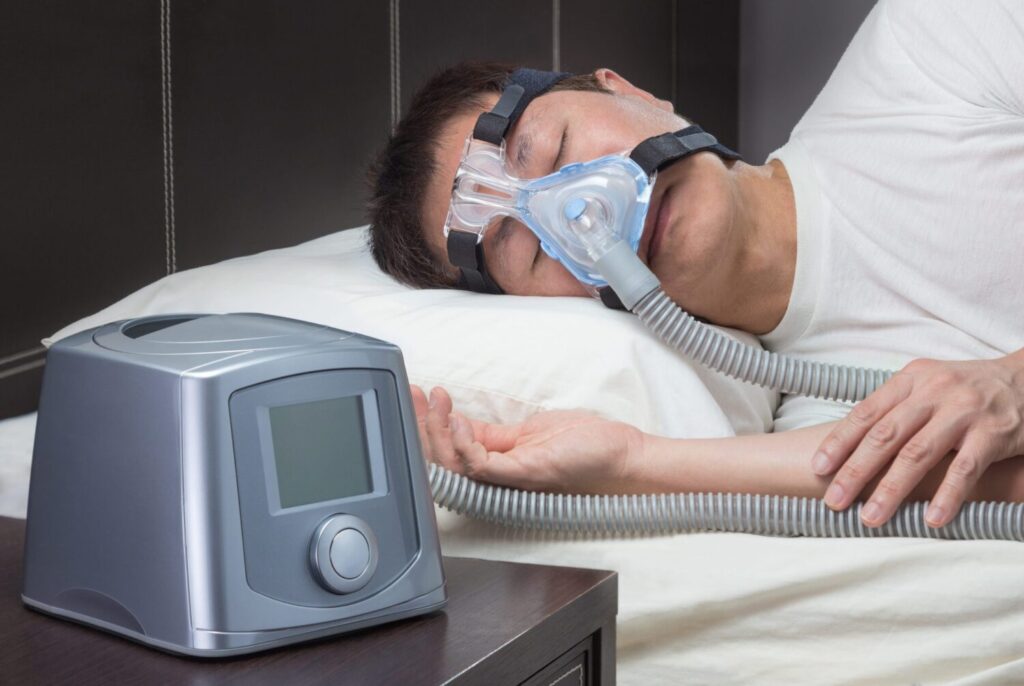Using Pediatric CPAP Machines?

A continuous positive airway pressure (CPAP) machine softly breathes pressured air into a child’s nose at a pressure sufficient to keep the child’s throat and airway open. Your child’s doctor or sleep specialist will conduct tests and monitoring to determine the optimal pressure setting.
This device takes in clean air and sometimes warms it in a humidifier to make breathing easier. The internal motor then pushes the filtered and humidified air through the tube. CPAP masks, which fits over the nose and is held to the wearer’s head with straps, is connected to the end of the tube.
Sleep apnea patients, even children can benefit from continuous positive airway pressure (CPAP) machines, which provide a continual flow of pressurized air via the nostrils to relax the muscles that collapse during sleep.
When the mask is placed over the nose, a steady stream of air prevents the throat’s muscles and tissues from relaxing and sealing off the airway, functioning instead as a cushion or air splint.
The continual airflow aids in keeping the airway totally clean by preventing the soft palate, uvula, and tongue from closing it in any way. The nighttime breathing interruptions experienced by so many people who suffer from sleep apnea are alleviated.

Those with mild to moderate sleep apnea, particularly OSA, may experience immediate improvements in quality of life. Many people can benefit from CPAP devices in terms of symptom relief and avoiding complications, according to studies.
Advantages of a CPAP Machine for Children
Surgery to remove the tonsils and adenoids is the most common treatment for obstructive sleep apnea (OSA) in children.
If a kid continues to suffer from OSA after undergoing surgery, or if surgery is not an appropriate treatment option, a continuous positive airway pressure (CPAP) machine may be prescribed. The patient wears a mask over their nose and mouth, and a CPAP machine blows out pressurized air through the tube.
You should consider CPAP if surgical treatment for your child’s sleep apnea fails or is not an option. Children with OSA may be prescribed CPAP prior to surgery.
Over time, untreated OSA can put stress on the heart and hinder your child’s mental growth, therefore CPAP may be recommended.
Helping your Child Adapt to CPAP Machine
Many kids have trouble getting used to the CPAP mask and air pressure at first. Support during therapy adaptation is typical. Do not force your child to wear the mask if he or she is resistant; doing so may frighten or traumatize the child, making it even more difficult to convince the child to accept CPAP in the future. Your child’s doctor can assist in the desensitization process (the process of getting used to CPAP) in order to make the device more tolerable for him or her.
Getting your child adjusted to the CPAP machine and mask can be accomplished with some at-home practice, which you can do with the guidance of your child’s doctor and care team.

We understand that your child may have trouble adapting to CPAP, but our team of experts at Air Liquide Healthcare. If your child is having trouble getting used to CPAP, try having the child wear the mask throughout the day before expecting him or her to go to sleep with it on.
To help your child get used to wearing a CPAP mask, you can combine it with something fun, such as watching a movie or TV show they enjoy.
Your kid can learn that masks are “cool” and not terrifying if you show him or her pictures of individuals like astronauts, firefighters, and scuba divers wearing masks. Allow your child to feel the mask in his or her hand to reassure him or her that it is not painful or terrifying before attempting to put it on his or her face.
As soon as he or she is calm enough to bring the mask up to their face, we can proceed to fasten the straps and headband to keep it in place. In the final stage of desensitization, once the youngster is comfortable wearing the mask and headgear, air pressure is introduced.
Children need to learn that only an adult can take off their masks, and even then, it should only be done when they are quiet. Removing the CPAP mask while a youngster is crying or fighting teaches the child that their negative conduct will get them what they want (removing the mask). Most kids can learn to properly use their CPAP with some at-home practice.
Is CPAP Efficient for Children?
It’s been shown that continuous positive airway pressure (CPAP) is nearly 100% successful in treating sleep apnea. However, CPAP is often only suggested in cases of OSA in children when surgery (typically adenotonsillectomy) has failed to alleviate the sleep apnea or when surgery is not a possibility. While a youngster is awaiting surgery, CPAP may be indicated in some cases.
How Long Will Your Child Need a CPAP Machine?
The airway and face of your child are still developing as long as he or she is still growing. Your child’s airway will naturally expand with age, leading to a reduction in sleep apnea. The future is never certain, but a sleep specialist familiar with your child’s unique physical makeup and medical history can probably give you a more precise response.
